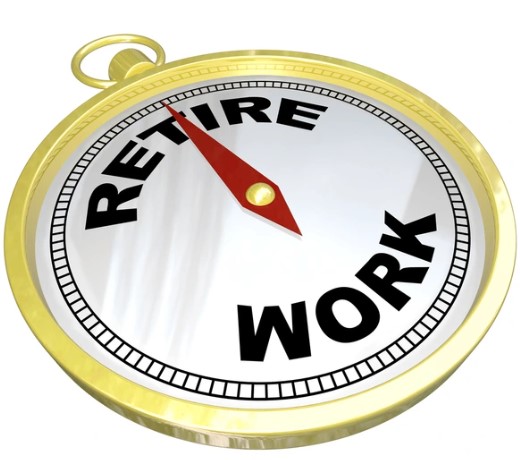In today’s uncertain economic landscape, more and more individuals are seeking ways to secure their retirement savings beyond the traditional stock market or cash holdings. As inflation rises and economic instability increases, gold and other precious metals have become increasingly popular options to diversify and protect retirement savings. One effective strategy for achieving this security is by investing in a Precious Metals Individual Retirement Account (IRA). In this article, we’ll explore how Precious Metals IRAs can maximize retirement savings, protect against economic fluctuations, and why now may be the ideal time to consider this investment.
What is a Precious Metals IRA?
A Precious Metals IRA is a type of self-directed Individual Retirement Account that allows you to invest in physical gold, silver, platinum, and palladium. Unlike traditional IRAs that are limited to stocks, bonds, and mutual funds, a Precious Metals IRA lets you diversify by holding tangible assets. These accounts provide the same tax benefits as traditional IRAs, with the added advantage of investing in metals that tend to maintain value over time, especially during inflationary periods or financial crises.
Why Consider Precious Metals for Retirement Savings?
Precious metals have been a store of value for centuries, prized for their rarity, stability, and resilience. When economic turmoil strikes, or when currencies devalue, gold and other metals often retain or increase their worth. Here are a few reasons why they might be a strong choice for your retirement portfolio:
- Hedge Against Inflation: Inflation reduces the purchasing power of currency over time. Gold and silver, however, have historically kept pace with or exceeded inflation rates, preserving wealth in real terms.
- Stability in Volatile Markets: Precious metals provide stability during economic downturns. While stock markets fluctuate, gold and silver tend to hold or increase their value when other assets suffer.
- Tangible Asset Ownership: Unlike stocks or bonds, owning precious metals gives you direct ownership of a physical asset. This can be reassuring for those who are wary of financial markets or currency devaluation.
- Diversification Benefits: Precious metals don’t correlate directly with traditional stock and bond markets, providing a hedge that can reduce risk in a diversified portfolio.
How Does a Precious Metals IRA Work?
Setting up a Precious Metals IRA is relatively straightforward, but it involves a few extra steps compared to traditional IRAs. Here’s a step-by-step guide on how it works:
- Select a Self-Directed IRA Custodian: You’ll need to work with a custodian who is authorized to manage self-directed IRAs and handle precious metal investments. Custodians for these IRAs are financial institutions that manage the administrative duties required for IRS compliance.
- Choose Your Precious Metals Dealer: Once you have a custodian, select a dealer from whom to buy your precious metals. Reputable dealers will offer gold, silver, platinum, and palladium that meet IRS standards for purity and authenticity.
- Purchase and Store the Metals: After selecting the metals, the custodian will facilitate the purchase and arrange secure storage at an approved depository. According to IRS rules, metals must be held in a depository and cannot be stored at home.
- Monitor and Manage Your IRA: As with any investment, it’s essential to periodically review your Precious Metals IRA, evaluating market conditions and adjusting your holdings to align with your retirement goals.
Tax Benefits and Considerations
Just like traditional IRAs, Precious Metals IRAs offer tax benefits that can be a boon for retirement planning. Here’s a quick look at the types of tax advantages:
- Traditional Precious Metals IRA: Contributions to a traditional IRA are tax-deductible, which means you pay taxes only upon withdrawal. This is beneficial if you believe you’ll be in a lower tax bracket in retirement.
- Roth Precious Metals IRA: With a Roth IRA, contributions are made with after-tax dollars, but withdrawals in retirement are tax-free. This can be advantageous if you expect your tax rate to be higher when you retire.
While the tax benefits can be substantial, it’s also important to note that IRS rules apply. For example, early withdrawals before age 59 ½ may incur a 10% penalty plus income tax, which means it’s best to view a Precious Metals IRA as a long-term investment.
Which Metals to Consider for Your IRA?
The IRS sets specific standards for metals eligible for IRA investment, which must meet minimum fineness or purity levels. Here’s a quick overview of popular metals to consider:
- Gold: The most common choice, gold is a timeless asset, sought for its stability and universal appeal. IRA-eligible gold must be at least 99.5% pure, with options including bars and coins like the American Gold Eagle and the Canadian Gold Maple Leaf.
- Silver: Silver is a more affordable option for those who want to diversify without the high costs of gold. IRA-approved silver must be 99.9% pure, and popular choices include the American Silver Eagle and Canadian Silver Maple Leaf.
- Platinum and Palladium: These metals are less common but are becoming increasingly popular for diversification. Like silver and gold, platinum and palladium coins and bars must meet IRS purity requirements, typically 99.95%.
Each metal offers unique benefits, so it’s essential to assess which combination aligns with your risk tolerance and investment goals.
Potential Risks and Considerations
While Precious Metals IRAs offer many benefits, it’s essential to be aware of potential risks:
- Storage and Custodian Fees: Precious Metals IRAs come with costs, including storage fees for the depository and custodial fees. These fees can accumulate over time, so it’s crucial to factor them into your retirement strategy.
- Market Volatility: While precious metals are generally stable, they can experience volatility, particularly in short-term periods. It’s best to view a Precious Metals IRA as part of a long-term plan rather than a short-term speculation.
- Liquidity Constraints: Selling precious metals from an IRA can take longer than selling stocks or bonds, as it requires dealing with the custodian and approved dealers. This may be a consideration if you anticipate needing rapid access to funds in retirement.
Is Now the Right Time for a Precious Metals IRA?
With rising inflation, economic uncertainty, and geopolitical tensions, now may be an ideal time to consider adding a Precious Metals IRA to your retirement plan. Diversifying with metals can provide a hedge against inflation, protect wealth in economic downturns, and reduce overall portfolio risk.
Investors should consult with financial advisors to evaluate how a Precious Metals IRA fits into their broader retirement goals. By balancing metals with traditional investments like stocks, bonds, and cash, you can create a well-rounded portfolio that maximizes stability, growth potential, and resilience.
Conclusion
A Precious Metals IRA can be an excellent strategy to secure retirement savings by diversifying your assets with tangible, value-retaining metals like gold and silver. Given current economic conditions, gold and other precious metals present an appealing option for those looking to hedge against inflation and protect their wealth for the future. By understanding how these accounts work, exploring the tax benefits, and assessing potential risks, you can make an informed decision to optimize your retirement strategy and enjoy peace of mind through economic cycles.






